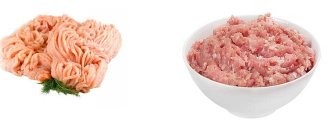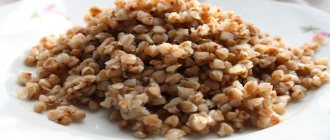Cooking
Lecho is a classic Hungarian dish, the essential ingredients of which are onions, sweet peppers and tomatoes. It should be noted that different European countries use different lecho recipes.
In this case, the benefits, harms and calorie content of lecho, which contains sweet green peppers, garlic, onions, tomatoes, sunflower oil, vinegar and sugar, will be analyzed.
The total calorie content of homemade lecho in 100 g is 49 kcal. 100 g of product contains:
- 0.8 g proteins;
- 2.1 g fat;
- 7.4 g carbohydrates.
The dish is enriched with vitamins and minerals, including vitamins A, B, choline, vitamin C, selenium, zinc, potassium, manganese, phosphorus.
Benefits of lecho
The undeniable benefit of lecho lies in the following beneficial properties of the product:
- Thanks to the rich composition of vitamins and minerals, lecho helps to normalize the functions of the digestive system, increases appetite, and activates metabolism;
- quite often the dish is recommended to be included in the diet of people suffering from diseases of the cardiovascular system and depression;
- Regular consumption of lecho helps improve the condition of the skin and nails;
- there is evidence that the minerals in lecho have a beneficial effect on memory;
- tomatoes, which are one of the essential components of the dish, are enriched with pectin, fiber, carotene, micro- and macroelements, so the benefits of the treatment for vision, removal of toxins from the body, and prevention of cancer are obvious;
- Numerous studies have proven that the dish has an antioxidant effect, slows down aging, and activates the endocrine system.
Homemade treatment is analyzed calorie content per 100 grams, benefits and harms
Lecho is a classic Hungarian dish, the essential ingredients of which are onions, sweet peppers and tomatoes. It should be noted that different European countries use different lecho recipes.
Interesting: Calorie content of sugar in 1 teaspoon
In this case, the benefits, harms and calorie content of lecho, which contains sweet green peppers, garlic, onions, tomatoes, sunflower oil, vinegar and sugar, will be analyzed.
The total calorie content of homemade lecho in 100 g is 49 kcal. 100 g of product contains:
- 0.8 g proteins;
- 2.1 g fat;
- 7.4 g carbohydrates.
The dish is enriched with vitamins and minerals, including vitamins A, B, choline, vitamin C, selenium, zinc, potassium, manganese, phosphorus.
Benefits of lecho
The undeniable benefit of lecho lies in the following beneficial properties of the product:
- Thanks to the rich composition of vitamins and minerals, lecho helps to normalize the functions of the digestive system, increases appetite, and activates metabolism;
- quite often the dish is recommended to be included in the diet of people suffering from diseases of the cardiovascular system and depression;
- Regular consumption of lecho helps improve the condition of the skin and nails;
- there is evidence that the minerals in lecho have a beneficial effect on memory;
- tomatoes, which are one of the essential components of the dish, are enriched with pectin, fiber, carotene, micro- and macroelements, so the benefits of the treatment for vision, removal of toxins from the body, and prevention of cancer are obvious;
- Numerous studies have proven that the dish has an antioxidant effect, slows down aging, and activates the endocrine system.
Harm treatment
Considering the harm of lecho, it should be noted that the product has many contraindications. So many components of the dish are strong allergens and can cause rashes and swelling.
If you have such an opportunity, it is better to eat more fresh vegetables. During heat treatment, vegetables in lecho lose a significant part of their nutrients.
Interesting: Calorie content of cherry tomatoes
You shouldn't buy a store-bought dish. Almost all factory-prepared foods contain harmful additives and preservatives designed to increase shelf life. In addition, store-bought lecho undergo more intensive heat treatment and, therefore, have minimal usefulness.
SUBSCRIBE TO SITE UPDATES
Copying of publication materials is permitted with a hyperlink to the Good Habits website.
IT IS VERY INTERESTING!
- Sunflower seeds calorie content per 100 grams, benefits, harm
- Calorie content of buckwheat noodles per 100 grams, harm, benefit, product
- Benefits, harms, calorie content of nori per 100 grams
- Benefits, harms, calorie content of pickled cabbage per 100 grams
- Benefits, harms, calorie content of seaweed per 100 grams
- Benefits, harms, calorie content of chips per 100 grams
- Benefits, harms, calorie content of asparagus per 100 grams
- Hummus calorie content per 100 grams, benefits, harm
goodprivychki.ru
Harm treatment
Considering the harm of lecho, it should be noted that the product has many contraindications. So many components of the dish are strong allergens and can cause rashes and swelling.
If you have such an opportunity, it is better to eat more fresh vegetables. During heat treatment, vegetables in lecho lose a significant part of their nutrients.
You shouldn't buy a store-bought dish. Almost all factory-prepared foods contain harmful additives and preservatives designed to increase shelf life. In addition, store-bought lecho undergo more intensive heat treatment and, therefore, have minimal usefulness.
Lecho
This is a vegetable dish that came to us from Hungarian cuisine. There are a huge number of recipes for preparing lecho, but the general principle and main components are not very different. Vegetables serve as the basis for preparing lecho. Usually these are sweet bell peppers, tomatoes and onions. Prepared and chopped vegetables are stewed with the addition of chopped tomatoes and various spices and seasonings are added during the cooking process to improve the taste. Bay leaf, allspice, and garlic give the vegetable dish a special aroma.
Lecho is prepared in several ways and can be consumed either freshly prepared or canned. In our country, lecho is a popular preparation for the winter. Peculiarities of preparation and long-term heat treatment can significantly increase shelf life. The recipe for lecho may include boiled rice, carrots, apples, beans and other ingredients.
The ingredient lecho is widely used in cooking and is a kind of preparation that allows you to quickly prepare a huge number of delicious dishes. Vegetables in tomato sauce perfectly complement pizzas, meat pies, and soups. Beef and pork stewed with lecho, Hungarian chops, stews and many other dishes with lecho have a high nutritional value and saturate the body with useful substances at any time of the year. As an independent dish, lecho complements side dishes, meat and fish products well.
Types of lecho
Lecho is a cold appetizer that surprises with a variety of flavors. But what remains the same in every recipe is aromatic bell peppers and ripe juicy tomatoes.
Lecho with tomatoes and peppers
- a simple appetizer, ready in an hour or two. You can serve it for lunch on a weekday and decorate your holiday table with this dish. To prepare lecho, grind a kilogram of tomatoes in a blender, add to them one and a half kilograms of washed and cut into strips pepper, two tablespoons of salt, half a glass of sugar, black pepper. Boil the mixture for about twenty minutes. Then put them in half-liter jars, add a clove of garlic to each, sterilize for 20 minutes and screw on with an iron lid.
with tomato juice.
The trick of this recipe is that you don’t have to bother with tomatoes, so it cooks much faster. For 3 liters of tomato juice, take bell pepper - 3.5 kg, onions - 1.5 kg, sugar, 9% vinegar, vegetable oil - 200 ml, salt - 1.5 tbsp. l. Mix the liquid ingredients and spices and heat them in a saucepan, then add the prepared vegetables and cook for about twenty minutes. We put it in jars, roll it up and into a fur coat.
The appetizer is served cold and hot. In the second case, the components included in the recipe are cut and frozen in a bag. Then you just need to put the contents of the bag in a frying pan and simmer.
These are simple and affordable lecho recipes. The calorie content of the dish is low. Therefore, it can be used in dietary cuisine.
History with taste
This is a classic dish of Hungarian cuisine. It is quite popular, throughout Europe. Translated, “lecsó” means ratatouille. As a matter of fact, this is the famous French ratatouille, only in the Hungarian variation. The dish is prepared from a variety of vegetables, so it is not surprising that there are a lot of variations in preparation. The only thing that remains unchanged is the content of the three main components: tomatoes, bell peppers and onions. The most interesting thing is that in its homeland the dish is not a salad, but a sauce.
In recent years, the classic recipe has been slightly modified in Hungary. Pieces of smoked meat, homemade or boiled sausage began to be added to lecho, and beaten eggs were added to the finished dish. The recipe has also undergone dramatic changes in Russia. In addition, it was improved so that it was possible to preserve a tasty dish for the winter. Lecho is served both as a side dish for meat and as a separate dish.
Calorie content of the dish
Each calorie content depends on the products contained in it. Here are some recipes (for 100 grams of finished dish):
The original recipe for the Hungarian version contains not only vegetables (peppers, tomatoes, eggplants). Smoked pork sausages, mushrooms, brisket, and rice were often added to it. Accordingly, the calorie content of such a dish increased.
This dish is tasty and not very high in calories, the ingredients are always available, so any housewife can prepare it and serve it.
Lecho
This is a vegetable dish that came to us from Hungarian cuisine. There are a huge number of recipes for preparing lecho, but the general principle and main components are not very different. Vegetables serve as the basis for preparing lecho. Usually these are sweet bell peppers, tomatoes and onions. Prepared and chopped vegetables are stewed with the addition of chopped tomatoes and various spices and seasonings are added during the cooking process to improve the taste. Bay leaf, allspice, and garlic give the vegetable dish a special aroma.
Lecho is prepared in several ways and can be consumed either freshly prepared or canned. In our country, lecho is a popular preparation for the winter. Peculiarities of preparation and long-term heat treatment can significantly increase shelf life. The recipe for lecho may include boiled rice, carrots, apples, beans and other ingredients.
The ingredient lecho is widely used in cooking and is a kind of preparation that allows you to quickly prepare a huge number of delicious dishes. Vegetables in tomato sauce perfectly complement pizzas, meat pies, and soups. Beef and pork stewed with lecho, Hungarian chops, stews and many other dishes with lecho have a high nutritional value and saturate the body with useful substances at any time of the year. As an independent dish, lecho complements side dishes, meat and fish products well.
Nutritional value of the dish
Russian culinary specialists could not stop at preparing lecho from three main products and made their own amendments. Now the traditional recipe additionally includes zucchini, carrots, fried onions, tomatoes and ground pepper. Tomatoes are usually added at the end to add thickness.
The BJU of a dish is difficult to calculate due to the multi-component nature. However, we present some indicators (per 100 grams of product):
- Classic homemade lecho made from bell peppers, tomatoes and carrots - 1.1/1.3/5.4 g
- Recipe based on zucchini with butter - 0.7/3.8/5.2 g
- Indicators of homemade lecho from tomatoes, bell peppers, sugar and salt without oil - 0.9/0.1/6.0 g
Calorie content of lecho
The nutritional value of this dish depends on the ingredients included in the composition, as well as on the presence of oil. We offer several indicators that will help you understand how many calories are in lecho prepared according to different recipes (data per 100 grams):
- Classic version - 37.1 kcal.
- Canned zucchini lecho - 58.1 units.
- Light version without oil - 29.2 kcal.
Lecho can be spicy, thick, meaty, liquid, vegetable, sweet. One thing remains unchanged - amazing taste.
Lecso is a traditional dish of Hungarian cuisine, popular in many countries. And if in Hungary lecho is served as a second course, in our country it is usually used as a winter preparation and rolled into jars. But, regardless of the method of preparation, lecho is not only tasty, but also very healthy, as it contains many vitamins and minerals. However, a large amount of low-calorie vegetables in a dish does not mean that it can be eaten in unlimited quantities, since it often also contains a lot of sugar and oil. The lucky ones who eat whatever they want and don’t gain weight may not even think about how many calories are in homemade lecho. However, if you are not so lucky, then you should look into this issue and find out what types of lecho there are and how many calories there are in home-made lecho.
Homemade lecho recipe. Calorie, chemical composition and nutritional value.
Nutritional value and chemical composition of “Homemade Lecho”.
The table shows the nutritional content (calories, proteins, fats, carbohydrates, vitamins and minerals) per 100 grams of edible portion.
| Nutrient | Quantity | Norm** | % of the norm in 100 g | % of the norm in 100 kcal | 100% normal |
| Calorie content | 71.4 kcal | 1684 kcal | 4.2% | 5.9% | 2359 g |
| Squirrels | 1 g | 76 g | 1.3% | 1.8% | 7600 g |
| Fats | 4.2 g | 56 g | 7.5% | 10.5% | 1333 g |
| Carbohydrates | 7.2 g | 219 g | 3.3% | 4.6% | 3042 g |
| Organic acids | 0.2 g | ~ | |||
| Alimentary fiber | 1.4 g | 20 g | 7% | 9.8% | 1429 g |
| Water | 84 g | 2273 g | 3.7% | 5.2% | 2706 g |
| Ash | 1.444 g | ~ | |||
| Vitamins | |||||
| Vitamin A, RE | 103.9 mcg | 900 mcg | 11.5% | 16.1% | 866 g |
| beta carotene | 0.624 mg | 5 mg | 12.5% | 17.5% | 801 g |
| Vitamin B1, thiamine | 0.041 mg | 1.5 mg | 2.7% | 3.8% | 3659 g |
| Vitamin B2, riboflavin | 0.048 mg | 1.8 mg | 2.7% | 3.8% | 3750 g |
| Vitamin B5, pantothenic | 0.043 mg | 5 mg | 0.9% | 1.3% | 11628 g |
| Vitamin B6, pyridoxine | 0.196 mg | 2 mg | 9.8% | 13.7% | 1020 g |
| Vitamin B9, folates | 9.083 mcg | 400 mcg | 2.3% | 3.2% | 4404 g |
| Vitamin C, ascorbic acid | 32.73 mg | 90 mg | 36.4% | 51% | 275 g |
| Vitamin E, alpha tocopherol, TE | 2.234 mg | 15 mg | 14.9% | 20.9% | 671 g |
| Vitamin RR, NE | 0.6475 mg | 20 mg | 3.2% | 4.5% | 3089 g |
| Niacin | 0.444 mg | ~ | |||
| Macronutrients | |||||
| Potassium, K | 186.97 mg | 2500 mg | 7.5% | 10.5% | 1337 g |
| Calcium, Ca | 12.01 mg | 1000 mg | 1.2% | 1.7% | 8326 g |
| Magnesium, Mg | 8.48 mg | 400 mg | 2.1% | 2.9% | 4717 g |
| Sodium, Na | 420.63 mg | 1300 mg | 32.4% | 45.4% | 309 g |
| Sera, S | 8.24 mg | 1000 mg | 0.8% | 1.1% | 12136 g |
| Phosphorus, Ph | 23.4 mg | 800 mg | 2.9% | 4.1% | 3419 g |
| Chlorine, Cl | 652.59 mg | 2300 mg | 28.4% | 39.8% | 352 g |
| Microelements | |||||
| Aluminium, Al | 146.6 mcg | ~ | |||
| Bor, B | 18 mcg | ~ | |||
| Iron, Fe | 0.538 mg | 18 mg | 3% | 4.2% | 3346 g |
| Yod, I | 0.36 mcg | 150 mcg | 0.2% | 0.3% | 41667 g |
| Cobalt, Co | 0.342 mcg | 10 mcg | 3.4% | 4.8% | 2924 g |
| Manganese, Mn | 0.0405 mg | 2 mg | 2% | 2.8% | 4938 g |
| Copper, Cu | 64.08 mcg | 1000 mcg | 6.4% | 9% | 1561 g |
| Molybdenum, Mo | 2.986 mcg | 70 mcg | 4.3% | 6% | 2344 g |
| Rubidium, Rb | 55 mcg | ~ | |||
| Selenium, Se | 0.108 mcg | 55 mcg | 0.2% | 0.3% | 50926 g |
| Fluorine, F | 2.52 mcg | 4000 mcg | 0.1% | 0.1% | 158730 g |
| Zinc, Zn | 0.0586 mg | 12 mg | 0.5% | 0.7% | 20478 g |
| Digestible carbohydrates | |||||
| Starch and dextrins | 0.224 g | ~ | |||
| Mono- and disaccharides (sugars) | 6.9 g | max 100 g | |||
| Glucose (dextrose) | 0.54 g | ~ | |||
| Sucrose | 0.072 g | ~ | |||
| Fructose | 0.144 g | ~ | |||
| Essential amino acids | 0.065 g | ~ | |||
| Arginine* | 0.022 g | ~ | |||
| Valin | 0.024 g | ~ | |||
| Histidine* | 0.012 g | ~ | |||
| Isoleucine | 0.022 g | ~ | |||
| Leucine | 0.023 g | ~ | |||
| Lysine | 0.024 g | ~ | |||
| Methionine | 0.006 g | ~ | |||
| Methionine + Cysteine | 0.007 g | ~ | |||
| Threonine | 0.019 g | ~ | |||
| Tryptophan | 0.006 g | ~ | |||
| Phenylalanine | 0.021 g | ~ | |||
| Phenylalanine+Tyrosine | 0.038 g | ~ | |||
| Nonessential amino acids | 0.135 g | ~ | |||
| Alanin | 0.031 g | ~ | |||
| Aspartic acid | 0.082 g | ~ | |||
| Glycine | 0.02 g | ~ | |||
| Glutamic acid | 0.132 g | ~ | |||
| Proline | 0.018 g | ~ | |||
| Serin | 0.02 g | ~ | |||
| Tyrosine | 0.021 g | ~ | |||
| Cysteine | 0.005 g | ~ | |||
| Sterols (sterols) | |||||
| beta sitosterol | 8.273 mg | ~ | |||
| Saturated fatty acids | |||||
| Saturated fatty acids | 0.5 g | max 18.7 g | |||
| 16:0 Palmitinaya | 0.256 g | ~ | |||
| 18:0 Stearic | 0.17 g | ~ | |||
| 20:0 Arakhinovaya | 0.012 g | ~ | |||
| 22:0 Begenovaya | 0.029 g | ~ | |||
| Monounsaturated fatty acids | 0.985 g | min 16.8 g | 5.9% | 8.3% | |
| 18:1 Oleic (omega-9) | 0.98 g | ~ | |||
| Polyunsaturated fatty acids | 2.474 g | from 11.2 to 20.6 g | 22.1% | 31% | |
| 18:2 Linolevaya | 2.474 g | ~ |
The energy value of Homemade Lecho is 71.4 kcal.
Primary Source: Created in the application by the user. Read more.
** This table shows the average levels of vitamins and minerals for an adult. If you want to know the norms taking into account your gender, age and other factors, then use the “My Healthy Diet” application.
Classic lecho recipe
Any popular dish, as a rule, has many cooking options. And this is understandable, since every housewife strives to improve the recipe to her taste, giving it individuality and originality.
Traditionally, lecho included only three types of vegetables: tomatoes, sweet peppers and onions, but it could include various additives and seasonings. Therefore, in order to determine how many calories are in tomato and pepper lecho, it is important to know whether sugar and oil were added to it or not. If lecho does not contain these components, then its calorie content will be minimal - about 27 calories per 100 grams of product. Even those who are on a strict diet can afford such a snack, since it does not pose any danger to their figure.
However, it is worth considering that such a cooking recipe is not common, and lecho usually contains a certain amount of butter and sugar. How many calories are in pepper lecho in this case? If you are buying a finished product, the easiest way to find this information is on the label. If this is a homemade dish, then, on average, lecho prepared with the addition of butter will contain 72 calories, and if sugar is added, then 88 calories. As you can see, the calorie content of lecho is still not very high, however, you should not eat kilograms of it.
Classic recipe
Ingredients needed for the recipe:
- vegetable oil 10–15 tablespoons;
- pepper 1 kilogram, carrots 0.5 kilogram;
- ripe tomatoes of bright, fleshy varieties, 1 kilogram;
- onions 0.3 kilograms, garlic 2 large heads;
- cinnamon on the tip of a knife, sugar 100 grams;
- salt to taste, vinegar 2 tablespoons.
Approximate energy value of products per serving:
- calorie content – 203 KCAL;
- proteins – 3.6 g, fats – 18.6 g, carbohydrates – 42.4 g.
Calorie content is calculated for raw fruits. Accordingly, to reduce the calorie content of the entire dish, you should reduce the amount of vegetable oil and sugar. This will naturally affect the taste of the final product.
Cooking lecho from pepper and tomato step by step instructions:
- Rinse the vegetables thoroughly. Peel the dirt from the carrots, remove the skin, cut into pieces. Peel the garlic and cut it into small cubes.
- Pour boiling water over the tomatoes and peppers, then remove the skins. Dry the vegetables on paper towels.
- Cut vegetables into slices. Sometimes, when seeds are separated from bell peppers, some of the pulp remains near the stalk. It must also be cut and set aside.
- Peel the onion. This can be done under running cold water to avoid unpleasant odor in the room and watery eyes.
- Fry it in vegetable oil until golden brown, transfer to a separate bowl, being careful not to capture excess oil.
- Separately, lightly fry the peeled pepper slices and arrange with onions in layers. Pass the remaining slices of carrots, tomatoes, pepper trimmings through a meat grinder. Bring the twisted vegetables to a boil and simmer for five to ten minutes.
- Just add salt to the filling and add vinegar, because after mixing all the ingredients, the taste will change. The most noticeable component of tomato and pepper lecho should be the taste of roasted vegetables.
- Mix the filling and vegetables and boil for five minutes. Finally, add cinnamon, sugar and garlic cubes and bring to a boil. Seal in pre-sterilized jars.
Other cooking options
In each country, the lecho recipe is adapted depending on the availability of certain products. And this is also the advantage of this dish: almost any vegetables are suitable for its preparation. This is how we traditionally prepare lecho with carrots, and those who like spicy food add hot peppers and garlic.
There are also more original recipes. For example, many people liked the zucchini-based lecho. This is a dietary vegetable, especially useful for those who suffer from edema, and thanks to its delicate fiber, it can be consumed even by people with diseases of the gastrointestinal tract and children. If you are wondering how many calories are in zucchini lecho, then, as a rule, it is not much either: 25 calories in a dish without oil and about 68 calories if oil has been added.
A recipe based on eggplant is also very popular. And although eggplant also has a fairly low calorie content, however, unlike zucchini, its fiber is quite coarse, so if you have gastritis or other stomach problems, eggplants should be consumed with caution. In addition, it is worth refraining from them in the diet of young children. Well, a traditional question for those who are worried about their figure: how many calories are in eggplant lecho? Since eggplant is a low-calorie vegetable, there is no need to worry: on average, 55 calories per 100 grams of dish.
Lecho as a main dish
The recipes listed above include exclusively vegetables, so it is quite difficult to get enough of this dish, although very tasty. However, there are options for lecho that can be consumed as an independent dish without fear of going hungry.
For example, lecho with rice is a complete vegetarian dish that can be eaten immediately after cooking or used as a preparation for the winter. How many calories are in lecho with rice depends on how much rice you added during the cooking process, since it is a fairly high-calorie product. If you are not zealous in this matter, the calorie content of the dish will be only 110 calories, which is not much for such a tasty and nutritious product.
Another way to turn lecho into a very filling meal is to add beans. In terms of the amount of protein, such a dish can compete even with meat products. And if you haven’t gone overboard with the amount of beans, then you don’t have to worry about how many calories are in lecho with beans. Usually no more than 95-100 per 100 grams.
The imagination of housewives is not limited to the listed types of lecho: there are recipes with the addition of potatoes, cucumbers, mushrooms, ginger, herbs and even chicken eggs or meat. Therefore, there is simply no single answer to the question: how many calories are in homemade lecho; it is important to take into account the composition and quantity of ingredients included in it. In any case, given the variety of recipes, you can always prepare a dish to suit your taste. And, of course, there is no point in giving up such a beloved and healthy product if you are on a diet. It will perfectly decorate both an everyday lunch and any holiday feast.
Calorie content of all types of lecho in a row:
Didn't find the product or dish you were looking for?
Let us know in a comment and we will add it:
Store shelves attract a variety of canned vegetables. Jars and jars, small and large, glass and iron, beckon with delicious tomatoes, cucumbers, and green peas. Is it really that useful what is hidden in colorful packaging? Do we always pay attention to the label, which contains information about the product? In this article we will talk about lecho: calorie content, composition, origin of the recipe.
Delicious recipe! How to make fried eggs







